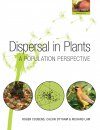By: Roger Cousens, Calvin Dytham and Richard Law
240 pages, 64 line illus, 6 b&w photos
![Dispersal in Plants Dispersal in Plants]()
Click to have a closer look
About this book
Contents
Customer reviews
Related titles
About this book
This advanced textbook is the first to explore the consequences of plant dispersal for population and community dynamics, spatial patterns, and evolution. It successfully integrates a rapidly expanding body of theoretical and empirical research.
*The first comprehensive treatment of plant dispersal set within a population framework
*Examines both the processes and consequence of dispersal
*Spans the entire range of research, from natural history and collection of empirical data to modeling and evolutionary theory
*Provides a clear and simple explanation of mathematical concepts
Contents
Preface; 1. Introduction; DISPERSAL OF INDIVIDUAL PROPAGULES; 2. Contribution of the parent plant to dispersal; 3. Attributes of propagules that aid dispersal; 4. Post-release movement of propagules; PATTERNS OF DISPERSAL FROM ENTIRE PLANTS; 5. Patterns of dispersal from entire plants; DISPERSAL IN POPULATION DYNAMICS AND EVOLUTION; 6. Invasions and range expansion; 7. Propagule dispersal and the spatial dynamics of populations and communities; 8. The Evolution of Dispersal; 9. Concluding Remarks; References; Index
Customer Reviews
By: Roger Cousens, Calvin Dytham and Richard Law
240 pages, 64 line illus, 6 b&w photos
This is a well structured book that has been much needed for some years and provides a modern analytical approach to a subject that is as old as botany itself. Peter Moore, Bulletin of the British Ecological Society The greatest value of this book is that it focuses on dispersal as a fundamental biological process. A vast literature on mating systems explores their evolution and how they influence population dynamics, gene flow, and adaptation. In comparison, the literature on seed dispersal, as opposed to pollen dispersal, is oddly scarce. Cousens et al.'s book is a good step toward remedying this. The Quarterly Review of Biology This book is highly recommended for plant and weed ecologists interested in plant population dynamics. Alistair J Murdoch Experimental Agriculture The book is very timely and current summary of the present state in dispersal research. Eckart Winkler Annals of Botany Overall, Dispersal in plants: a population perspective is an excellent work, and a valuable addition to the plant ecologist's bookshelf. It would be suitable for both a graduate and advanced undergraduate students, as well as for anyone seeking an enjoyable, well-written introduction to the growing field of dispersal biology. Emily Moran Ecology Although the authors aimed this book at graduate students in plant ecology, plant scientists and ecologists, I recommened it to all weed scientists and agronomists as well. Camilla Moonen EWRS Newsletter




































